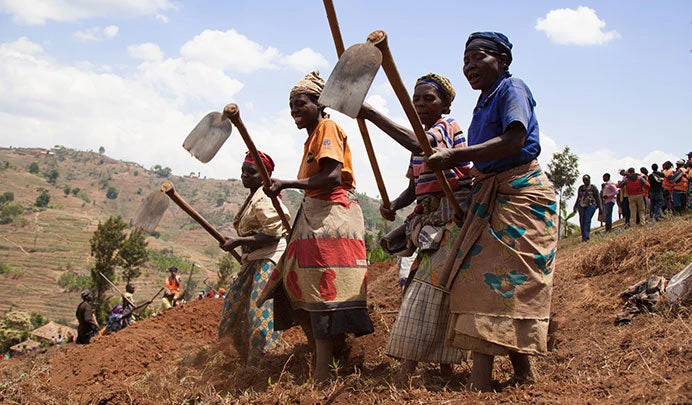
Climate-smart agriculture (CSA) can help make the food system more sustainable in a changing climate. But does it come at a cost to women, in terms of a heavier workload?
Climate-smart agriculture’s three pillars: improved agricultural productivity, increased adaptation to climate change and reduction of greenhouse gases are goals well worthy of targeting. On the one hand, CSA practices such as water harvesting or planting trees that provide more accessible fuel, fodder and food can save women’s time. On the other hand, some practices such as increased weeding or mulch spreading can require women to spend more time in the field.
Another question concerns CSA’s potential impact on nutrition. If adaptation focuses on staple grains but neglects pulses, vegetables and fruits that many women grow to feed their households, family nutrition will suffer.
Clearly, there has to be some careful thinking about how to employ CSA practices so that both men and women have equal opportunities to adapt and benefit from them.
Climate change affects women and men in different ways, resulting in both a different scope and opportunity for adaptation and mitigation. Unfortunately there is no silver bullet that ensures that climate-smart practices are also gender-smart. Culture, together with geography and the agro-ecological environment need to be taken into account when actions are designed and implemented. Field level climate-smart practices are not enough. Institutions, policies and financial issues that impact adaptation and opportunities for men and women need to be taken into account. Climate-smart agriculture will only be gender-smart when we know what it demands on men and women and how it impacts them.
The new publication jointly prepared with FAO, IFAD and the World Bank, Gender in Climate-Smart Agriculture, is designed to help practitioners implement CSA projects in a gender smart way. The module provides plenty of examples and good practices to support the design, implementation and monitoring and evaluation of investments in CSA projects to ensure that they are both climate and gender-smart. One area it gives guidance on is labor-saving technologies in the context of CSA—to ensure that the labor burden on women isn’t increased, and women are freed up to spend time on other activities that are important to them. Happy Climate and Gender-Smart Rural Women’s Day to everybody.



Join the Conversation